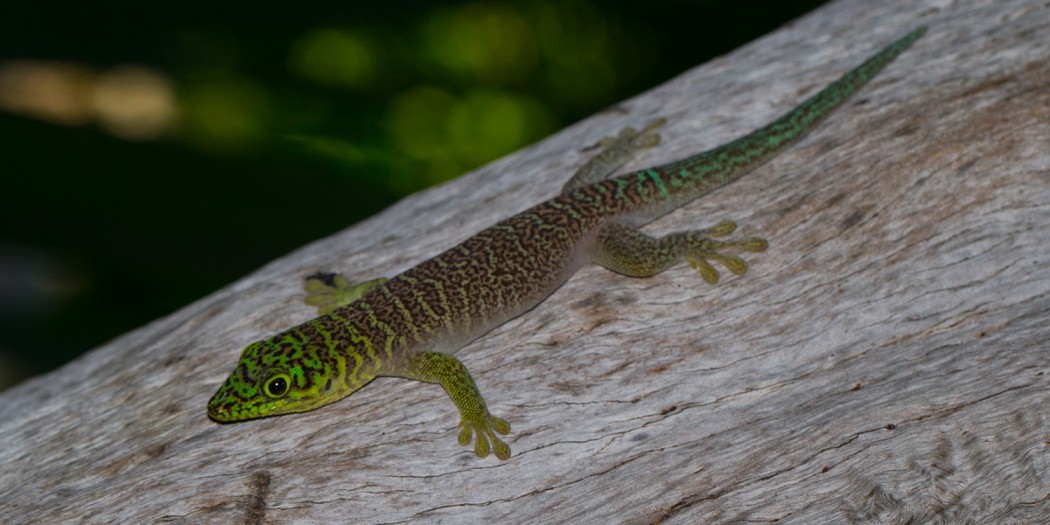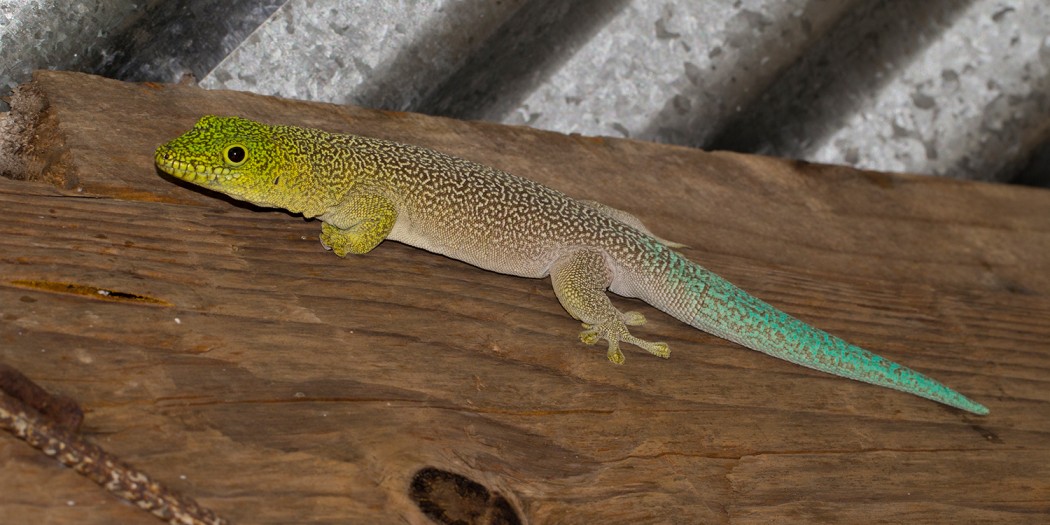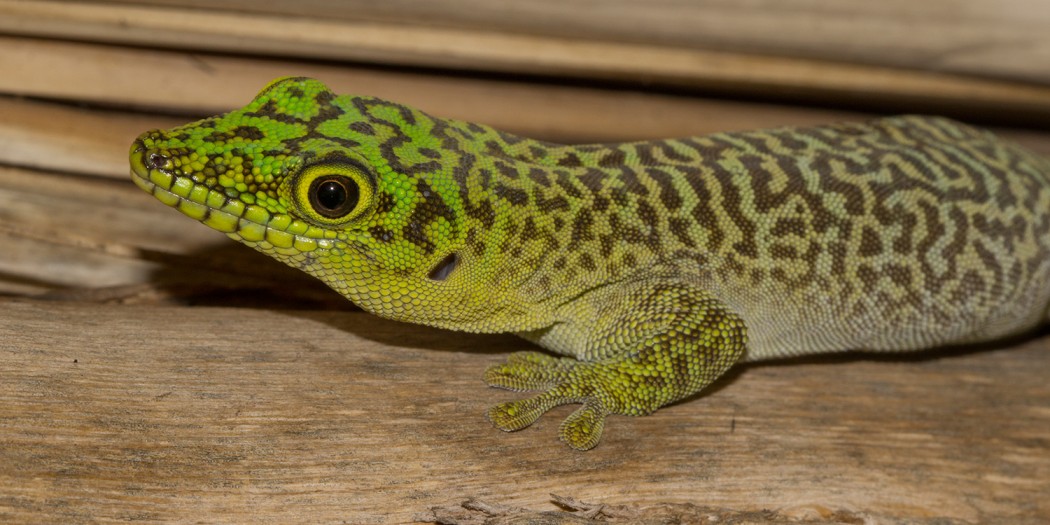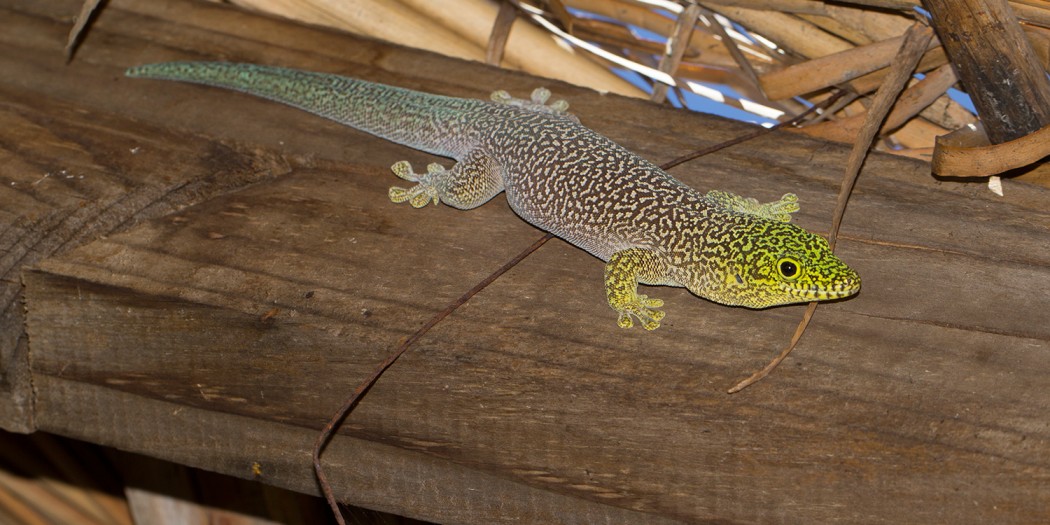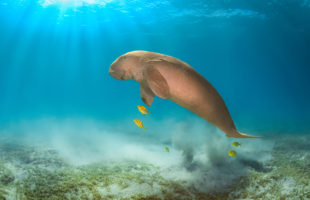In southwest Madagascar, between spiny forests and wooden huts, lives a gecko with triking colours: Standing’s Day Gecko (Phelsuma standingi). Who visits the dry, hot area between Morombe, Toliara (French Tuléar) and the national park Isalo, will sooner or later meet this beautiful reptile. It originally lives in dry and spiny forests, but today – contrary to many other, outdated reports – it can often be found in wooden huts and stone houses. On the latter they are easier to find because the geckos live in tall trees such as old tamarinds and sterkulia plants in the wild and are often difficult to spot from below despite their conspicuous colouring.
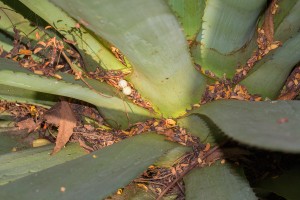
It was not until 1913 that the colourful gecko, long known to the Madagascans, was described by the two British zoologists Paul Ashyford Methuen and John Hewitt. Two years earlier, the two had undertaken a seven-month expedition to Madagascar and conserved several specimens of the species – mainly young animals in size. They named their find after Herbert F. Standing, a paleontologist and missionary friend from Antananarivo. Standing’s Day Gecko is one of the largest Phelsuma in Madagascar today, and can reach impressive body lengths of up to 26 cm – some exceptional specimens become even larger.
From about December to March the rainy season lasts in the distribution area of the Standing’s Day Geckos. The geckos then show their most beautiful colors with bright green, black marbled head and light blue tail. The underside always remains grey-white. Now is the best time to mate – it is the richest time of the year. Mainly insects are on the menu of Standing’s Day Geckos. They partcicularly like small moths, flies and mosquitoes, and snatch the insects cleverly from the air. But Standing’s Day Geckos also occasionally do not stop at smaller geckos – in the long dry season, in which it hardly ever rains and only dew drops in the morning provide refreshment, they will have to draw on their fat reserves. We know from other day geckos that they like to nibble on the sweet nectar of various trees. It can be assumed that Standing’s Day Geckos geckos also use fallen fruits or nectar during the short rainy season, but it is rarely observed.
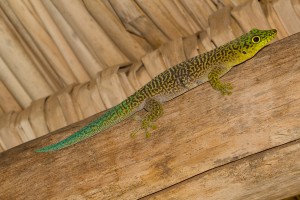
After a successful mating it takes about six weeks until the female lays two round, white eggs in dark leaf axils. A female can produce up to 12 eggs per season. After about two months the young geckos hatch and are only a few centimetres long. They show a different colour dress than their parents with regular tiger stripes on bright green. It is believed that this drawing protects them from the adult animals of their own species and their hunger. The conspicuous coloration of the young loses itself at the age of eight to ten months, however, the geckos are sexually mature only with scarcely two years.
For more than 10 years there have been no export quotas for Phelsuma standingi under the Washington Convention on Biological Diversity. While countless animals were exported for trade in the 1990s, terraristics today get along well with offspring of the Standing’s Day Geckos. The animals are not only very popular because of their colours and their friendly nature, but can also be kept and bred quite easily. Standing’s Day Geckos can reach an age of over 20 years. However, a major problem remains: The populations of the geckos are dwindling. Prey predators such as birds or snakes play only a small role in this, the fragmentation and the extensive loss of habitat are decisive. Like so many other reptiles, Standing’s Day Gecko has to cope with cleared forests, grazing herds of zebu and ever-expanding human settlements. The species is now listed as endangered on the IUCN red list. How many animals actually still exist is unknown.
If you want to find some of them in the open air or directly at your own holiday bungalow, you should have a look around in spring in the National Park Zombitse-Vohibasia and north of Toliara in the many small coastal villages such as Ifaty-Mangily, including Reniala reserve. At the end of the rainy season you can still find many of these beautiful geckos here, and you can watch them in peace.
 MADAMAGAZINE Your Magazine about Madagascar
MADAMAGAZINE Your Magazine about Madagascar
